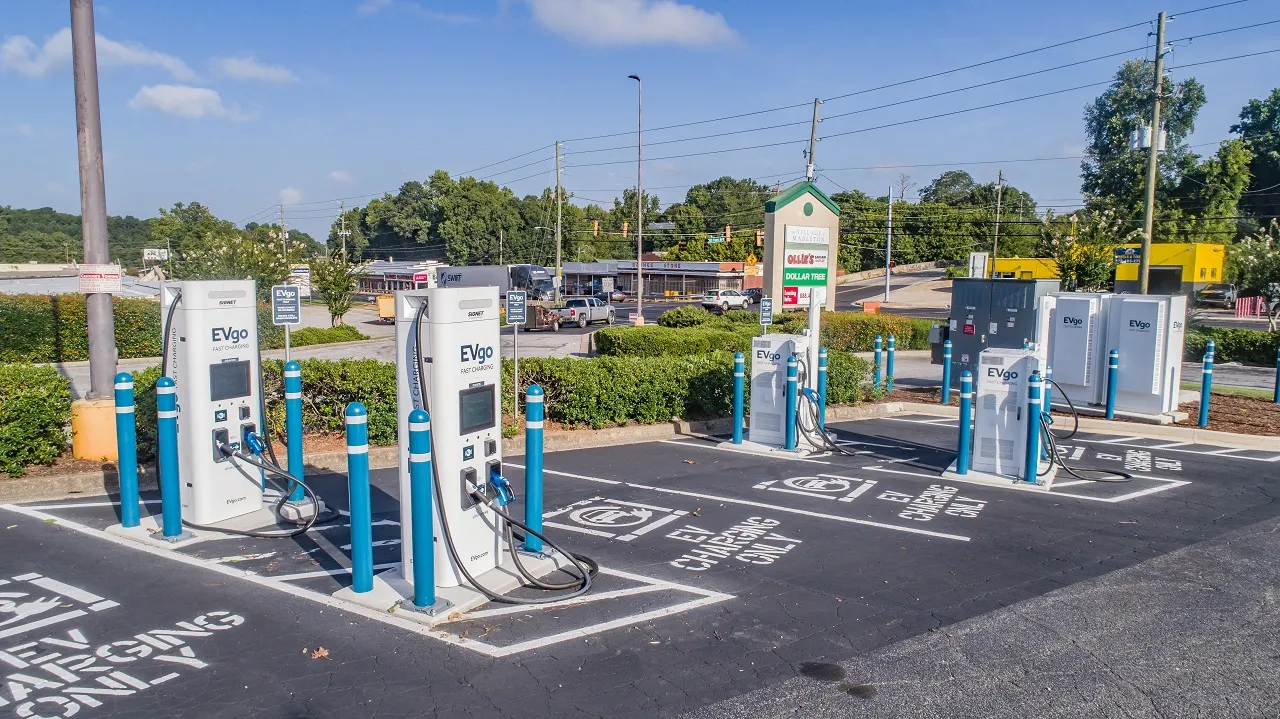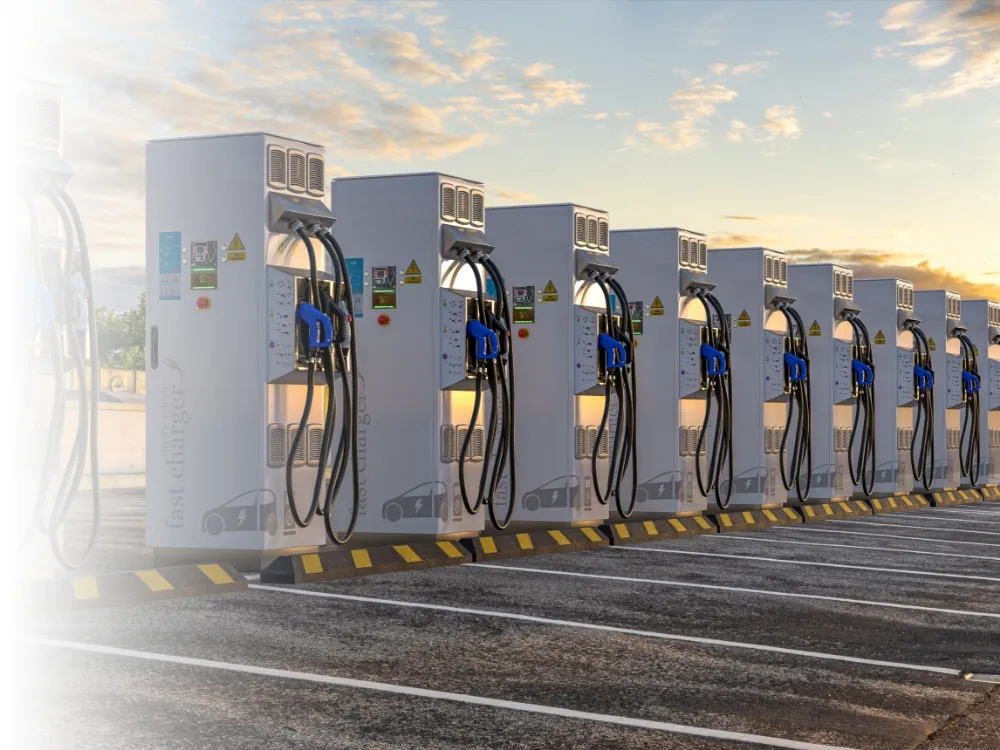Commercial electric vehicle charging stations are an important infrastructure to promote the popularization of electric vehicles. This article introduces the definition, types and three major suppliers of commercial charging stations in the market, providing readers with a comprehensive understanding.
With the development of electric vehicles, commercial charging stations will play an increasingly important role in providing drivers with a convenient and reliable charging experience.
What is a commercial EV charging station
Commercial EV charging stations are facilities that provide charging services for electric vehicles, usually set up in shopping malls, hotels, office buildings, public parking lots and other places.
Unlike home charging piles, commercial charging stations are designed to handle more traffic and provide faster charging speeds to get drivers back on the road as soon as possible.
Commercial charging stations have intuitive designs and clear instructions to match the stylish appearance of electric vehicles. In addition, they are becoming more and more intelligent, adding features such as app connectivity, energy management and payment processing.
As the number of electric vehicles increases, commercial charging stations are no longer just a practical tool, they are becoming the first step on the road to a cleaner and more sustainable society.
Types of Commercial Electric Vehicle Charging Stations
Commercial electric vehicle charging stations are generally divided into three types, each with its own advantages and disadvantages:
- Level 1 charging stations: charge more slowly, usually taking about 8 hours to complete charging, suitable for places such as office buildings or large apartments.
- Level 2 charging stations: widely used in places such as shopping malls and hotels, usually charging the battery from empty to full in 4-6 hours, making it a wise choice.
- DC fast charging stations: can charge electric vehicles to 80% of their capacity in 20-30 minutes, suitable for places such as highway service areas that require fast charging.
In addition, there are special-purpose charging stations, such as Tesla’s Supercharger, which is designed specifically for Tesla models and provides fast charging. Each commercial charging station offers its own balance of speed, convenience, and availability.
Three major electric vehicle charging station providers in the market
1. Tesla
As a dominant player in the electric vehicle market and a pioneer in fast charging solutions, Tesla has opened its extensive Supercharger network of more than 45,000 charging stations to other electric vehicle brands.
This strategic move makes Tesla a comprehensive provider of public charging infrastructure for the entire industry.
2. ChargePoint
ChargePoint is one of the largest electric vehicle charging networks in North America and Europe, with more than 174,000 charging stations worldwide.
ChargePoint provides hardware and software for electric vehicle charging and operates its own network of electric vehicle charging stations.
3. EVgo
EVgo operates one of the largest public DC fast charging networks in the United States. Fast chargers are a core aspect of EVgo’s long-term strategy.
The company hopes to accelerate the adoption of electric vehicles in the United States through convenient and fast fast chargers. They emphasize customer-centric features such as reliability, convenience, and special offers.

FAQs
1.Will frequent charging damage electric vehicle batteries?
Frequent charging does have a certain impact on battery life, but the extent of the impact depends on the charging method and usage habits.
Modern battery management systems are already able to cope well with the effects of frequent charging, and batteries generally have a long service life.
It is recommended that users follow the manufacturer’s recommendations to avoid over-discharging and high-temperature charging.
2.Which is better for the battery, fast charging or slow charging?
Slow charging is better for the battery because it uses lower current and power, and the charging process is gentle, which can reduce the heat accumulation and chemical reaction rate of the battery, thereby extending the battery life.
Although fast charging is convenient, high current and high power will accelerate battery aging, and frequent use of fast charging may shorten the battery life.
3.What is the relationship between battery life and number of charges?
Battery life depends mainly on the number of charge and discharge cycles, not simply the number of charges. A complete charge and discharge cycle refers to the process of the battery from full to empty and then full again.
Partial charging (such as charging from 30% to 80%) is not considered a complete cycle and has little effect on battery life.
Modern battery technology and management systems can extend battery life very well, and batteries can usually support hundreds to thousands of charge and discharge cycles.
In conclusion
Electric vehicles are the future of transportation, and commercial charging stations are a key factor in driving this trend.
By understanding the types of commercial charging stations and the main suppliers, businesses and individuals can make informed decisions and contribute to the popularization of electric vehicles.
Let us work together to build a cleaner and more sustainable future.

